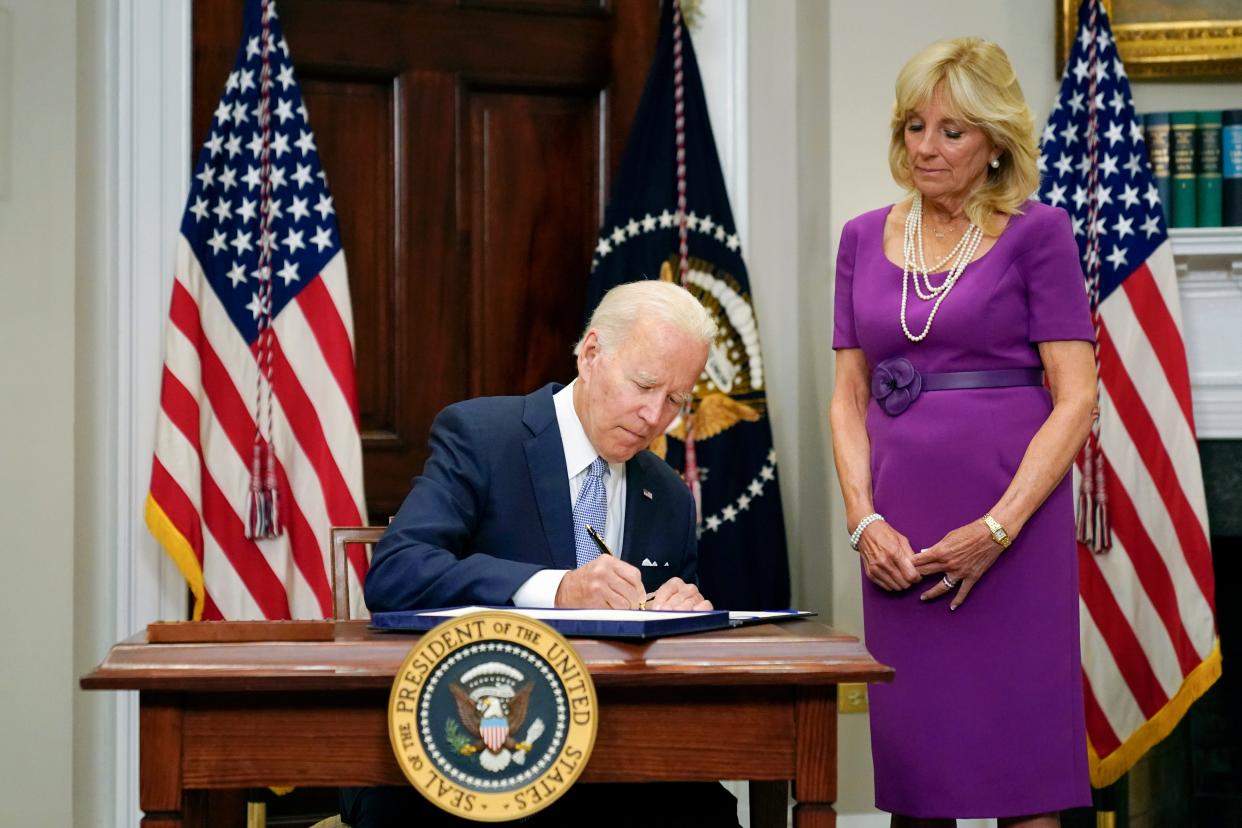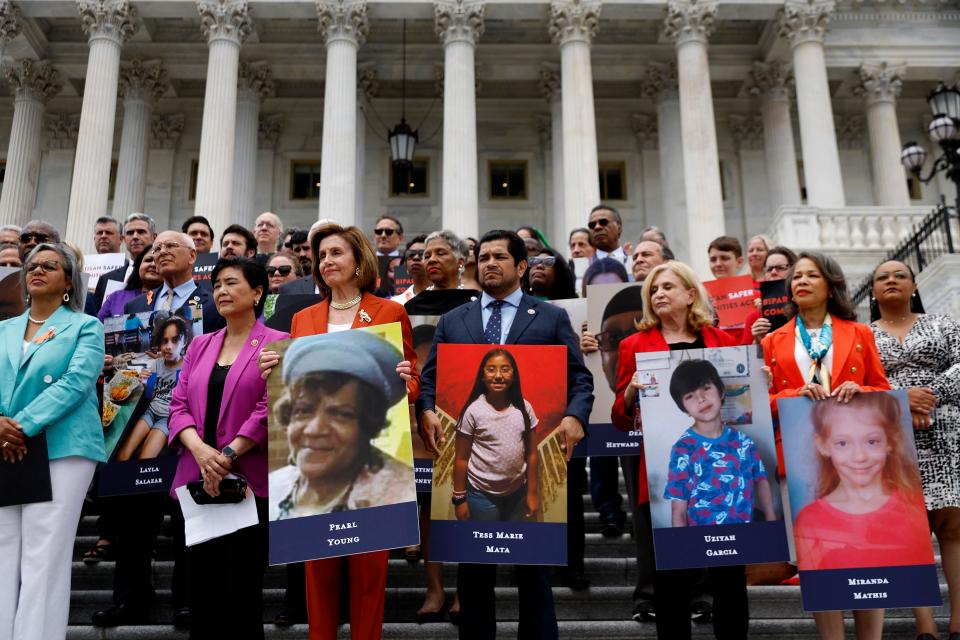Federal response to school shootings might frustrate, but bill was result of compromise

President Joe Biden recently joined families of victims of gun violence in a ceremony to recognize the Bipartisan Safer Communities Act, which was signed into law last month.
Passed in response to the tragic school shooting in Uvalde, Texas, the act has been described as the most significant federal gun reform in decades. It requires additional screening for firearms purchases by those under 21, further limits purchases by those convicted of domestic violence and provides funding to assist states in limiting access to firearms by those deemed a danger by courts.
The act includes much more than just new laws around gun ownership, though. There are funds to support mental health in communities and schools. For example, the act funds a national suicide and crisis hotline, provides grants for trauma care in schools and provides training for first responders to mental health needs in the community.
More from UF Education Policy Research Center:
Increasing pay alone will not be enough to curb teacher turnover
Several factors contributing to rising violence, misbehavior in schools
Standardized tests in schools aren’t going away, but innovation is welcome
There are also significant resources for school programs and security. The act establishes a clearinghouse of school safety evidence-based practices. It provides further grant funding to schools for security, training personnel, implementing anonymous tip systems, establishing threat assessment teams and hiring school police.
Yet, despite this comprehensiveness, there were vocal critics of the legislation from both sides of the political spectrum. For example, the National Rifle Association opposed the legislation for its restrictions on firearms. At the same time, several civil rights organizations critiqued the legislation’s support for school police and other security measures.
In the weeks since the act’s passage, I have fielded questions and discussed with researchers the relative tradeoffs of the new law. Many of these conversations have grappled with whether this law represents a step forward or a step back in terms of what is scientifically supported to improve school and community safety. My answer is that it represents a compromise.

What I have learned and teach as a public policy scholar is that the process of policy formation is not simply about what works. It is also about what is politically, economically and logistically feasible within a system of limited resources.
It is true that elements of the Bipartisan Safer Communities Act increase funding for approaches to school security — like hardening school buildings and use of school policing — that have limited evidence for their ability to stop school shootings and may have unintended consequences on the school environment. Similarly, more substantial gun reforms pushed by some advocates such as universal background checks and assault weapon bans were not included in the final law. Such compromises on effectiveness may have been necessary though to achieve political acceptability.
While this may be frustrating to some, the problem of gun violence in schools and in America broadly demands a response. A federal report, released last month, documents that the 2020-2021 school year had the highest number of school shootings of any year since data collection started in 2000. As the tragedy in Uvalde and other recent mass shootings in and out of schools have demonstrated, this trend of gun violence continues.
What the Bipartisan Safer Communities Act represents is a multi-faceted response to the effects of gun violence on schools and communities. This comprehensiveness necessitates some compromises, but it pushes forward multiple mechanisms to address the issue both in and out of schools.
As scientists who study issues of school safety, researchers such as myself will have many opportunities to continue learning about what works and what doesn’t and using that evidence to inform future policies.
At the community level, the expanded resources of the Bipartisan Safer Communities Act provide opportunities to increase school and community safety. Given that many elements of the act allocate funding and resources rather than mandate particular policies or practices, local communities will have choices about what to implement and how best to use the new resources locally.
Ultimately, compromise on policy was necessary to ensure that school and community safety weren’t compromised by inaction.
F. Chris Curran is an associate professor and Director of UF’s Education Policy Research Center (www.ufedpolicy.org). This piece is part of regularly recurring op-eds from faculty of the center.
Join the conversation
Share your opinion by sending a letter to the editor (up to 200 words) to letters@gainesville.com. Letters must include the writer's full name and city of residence. Additional guidelines for submitting letters and longer guest columns can be found at bit.ly/sunopinionguidelines.
Journalism matters. Your support matters.
Get a digital subscription to the Gainesville Sun. Includes must-see content on Gainesville.com and Gatorsports.com, breaking news and updates on all your devices, and access to the eEdition. Visit www.gainesville.com/subscribenow to sign up.
This article originally appeared on The Gainesville Sun: F. Chris Curran: Bipartisan Safer Communities Act required compromise

